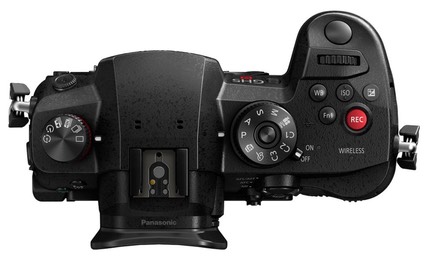Panasonic today announced an "s" version of the GH5, essentially replicating what Sony did with the A7s: lower megapixel count coupled with design changes to make the pixels perform better in low light.

Instead of the GH5's 20mp m4/3 sensor, the GH5s gets a 10.2mp sensor. That means that the photosite size on this new camera is more akin to what the APS-C cameras such as the Fujifilm or Sony 24mp cameras use.
As with the GH5, the GH5s mostly concentrates on video-related features. The GH5s features 4K at 60 fps, recorded with Log or HDR Hybrid Log gamma and Long-GOP compression in 4:2:2 10-bit (150Mbps), not just giving a slow motion capability, but also improving the gradability of the resulting image as well. Also, 240 fps is now supported at 1080P, for an even better slow motion capability than exists in previous Panasonic bodies.
The big surprise is no sensor-based image stabilization. That seems a bit unusual in a camera destined for video use. Panasonic basically says "use OIS lenses or a gimbal." The good news is that there's no extra heat at/near the image sensor, which means the images stay more noise-free. Also oddly for such a video-related camera, the camera is multi-aspect ratio, providing the same basic pixel count and angle of view for 4:3, 17:9, 16:9, and 3:2 aspect ratios.
The sensor itself is dual mode in terms of ISO, providing base ISO of 400 and 2500, despending upon setting. Overall you can set ISO 160 to 51,200 normally, plus 80, 102,400 and 204,800.
Curiously, still photography buffs will finally get 14-bit raw in an m4/3 camera (all previous m4/3 cameras have been maxed out at 12-bit raw). This seems to imply that Panasonic is capable of extracting more shadow detail from this new lower megapixel count sensor, but bit depth is not the simple construct it at first appears. We've seen camera makers make other decisions that impact whether the full bit depth available actually produces usable data before, so this one needs to wait for testing.
Overall, the GH5s occupies the same place as the Sony A7s: a specialist camera designed specifically to enhance low light work. And as with the A7s, it comes with a bit of a price bump: the GH5s is US$2499, or US$500 more than the original GH5. That's not because the camera costs more to build, per se, it's because it's likely to have fewer takers, thus the development costs have to be paid back over a smaller number of units.
But I wonder about that. Given that the primary buyer of a GH5 is decidedly a video shooter, the added capabilities in the GH5s may make it the better choice, right? It very well may be that Panasonic ends up seeing the opposite of what they expect: the GH5s outsells the GH5. The tricky part is the lack of IS.
Support this site by purchasing from the following advertiser:
